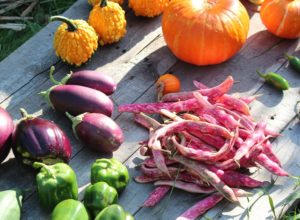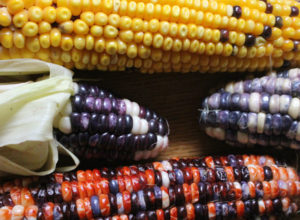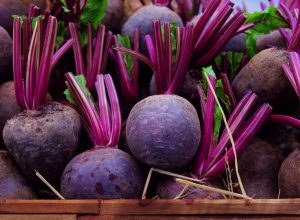October Gardening Guide – Mediterranean Climate
As I look around the garden today, I’m delighted by the brilliant green of new spring foliage, the shade of trees and vines that self-adjust as the weather warms, the rapid emergence of heat-loving vegetables from seed, as well as new growth on the subtropical trees. It all tells me that we’ve reached that turning point in spring, when the heat lovers can be planted out. And soon we need to get seriously (truly, deeply) watering.
What to plant in October?
Broccoli, spinach and tomato: Seeds sown last month in trays are ready to be planted out into garden beds now if they have several sets of leaves – late afternoon is best so they can settle in overnight.
Chili, eggplant and capsicum: These need more warmth to germinate and may not have their second set of leaves yet, so timing depends on how they are progressing. Move trays and pots gradually into full sun so they can harden up before planting out.
Leek, kale, lettuce, radish and silverbeet: Seed-raising mix can be re-used for the next round of sowing. Bear in mind when planning your beds that the leafy greens will prefer semi-shade as the weather warms up – ideally aim for morning sun or plant something taller such as tomatoes, capsicum, eggplant, corn or trellised crops such as climbing beans to the west of these beds to protect them from the afternoon sun through summer.
Beetroot, beans, pumpkins and squash, corn/maize, melons and cucumbers: Sow direct and keep some seed for succession planting over the next few months. Sow the corn either in a block (rather than a row – for better pollination) or in a patch shared with squash and beans for the traditional ‘three sisters’ planting guild to integrate your crops, maximise diversity and ensure mutual benefit. Note that all these are big seeds (a good clue to their suitability for direct sowing) and they like to be planted deeper than tiny seeds, in a hole/furrow at least 2-3 times their own depth.
Harvest and Preserve
There are still plenty of leafy greens coming: lettuce, spinach and silverbeet have put on rapid growth – enjoy them quickly before they go to seed (and get another round going to replace them). the same applies for parsley and coriander. If you haven’t already eaten all the root veg be sure to harvest them before they go to seed as many of them – for example carrot, beetroot and parsnip – develop tougher roots as they do so. While parsnip is best eaten immediately to maintain sweetness, carrots and beetroot will keep well in a fridge crisper if they are unwashed, have all leaves removed immediately and are in sealed bags. Asparagus is popping up all over (leave some shoots to feed next year’s crop!) and late peas are still going strong. You may have some citrus still holding well on the trees – check regularly as quality will decline if they are over-ripe. Consider freezing the juice before they go to waste. Berries of all kinds are putting on rapid growth – keep an eye out for fruit and once it starts, pick regularly to maintain production. If you only get a few fruits each day you could add them to a bag in the freezer daily until there are enough for a meal – or just enjoy them as fresh snacks.
Maintenance
- Thin out stone fruit as they set to improve fruit quality and protect branches from breaking later.
- Mulch garden beds to retain moisture and moderate temperature.
- Check drip irrigation to ensure it’s working effectively, and extend it to new plantings.
- Use weeds to feed chooks, make salads, compost or weed tea.
- Replace weeds with seeds of the plants you do want (let the weeds show you where things want to grow!).
- Provide wind shelter for sensitive plants and new seedlings that can dry out quickly.
Permaculture principle #10: Use and value diversity
A great thing about growing from seeds and cuttings is that you can access so many more varieties of each fruit, vegetable or herb than those available in pots and punnets at garden centres. By growing as many different varieties as possible (from GM-free, non-hybrid seed and from swapped cuttings), we can:
- Extend our harvest season.
- Experience unusual colours, flavours and forms to liven up our meals.
- Plant our own insurance against extreme conditions – some varieties will cope better than others with heat-stress, drought, frost or water-logging.
- Keep our food heritage alive and available for future generations.
- Allow food plants to acclimatise, cross and develop new, ideally adapted varieties for our local conditions.
- Save seeds from our favourite foods for future planting and sharing.
Nadja Osterstock – find Nadja’s Garden on facebook, email nadjasgarden@gmail.com,
0410 636 857, website and blog at www.nadjasgarden.com.au









